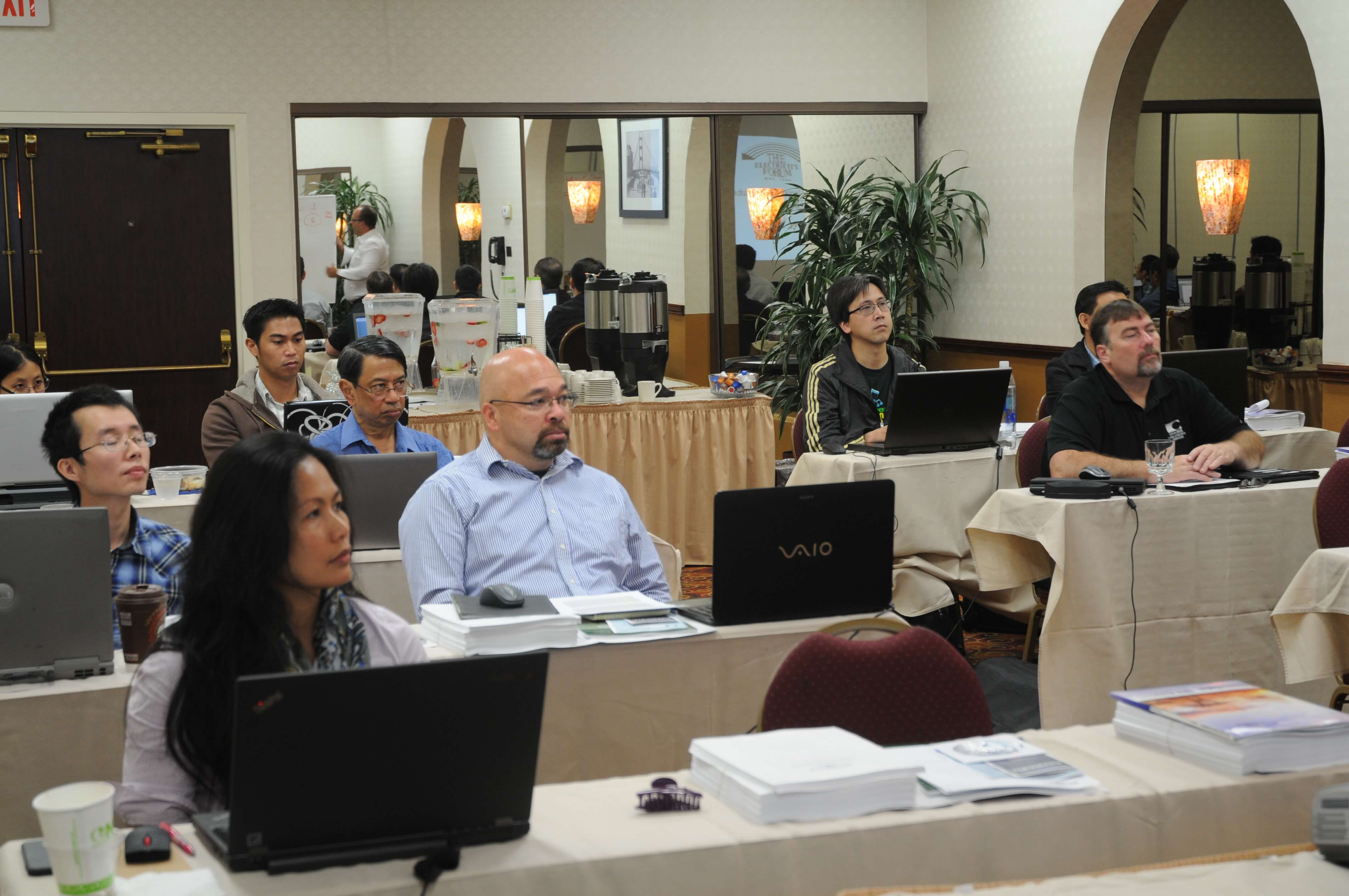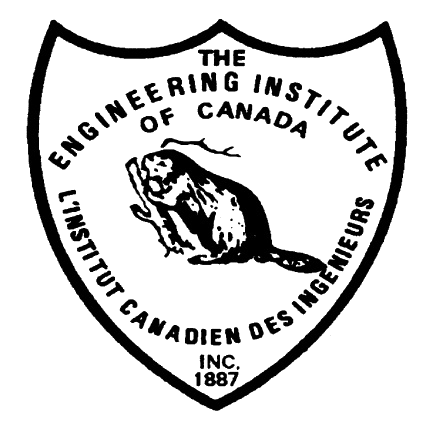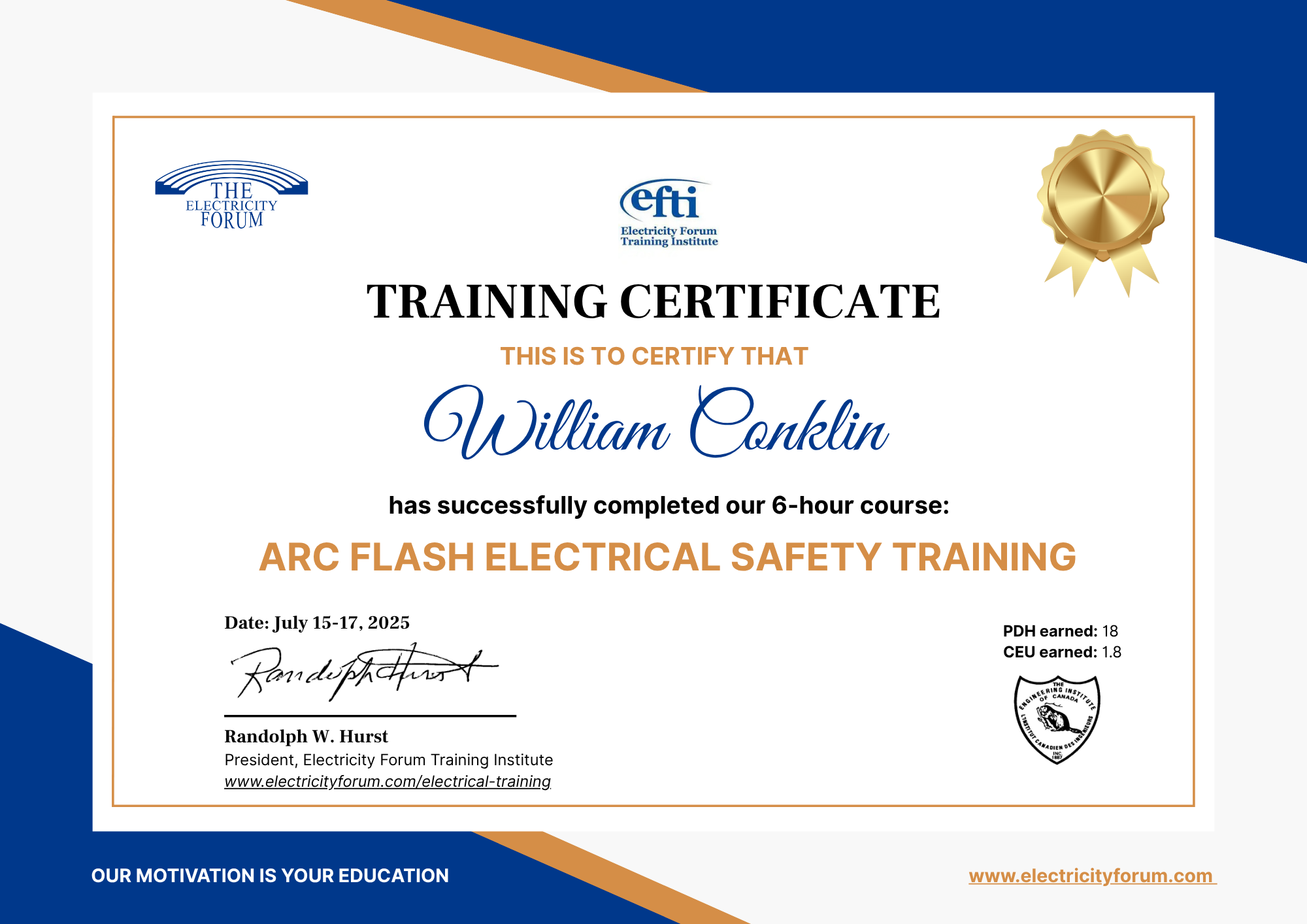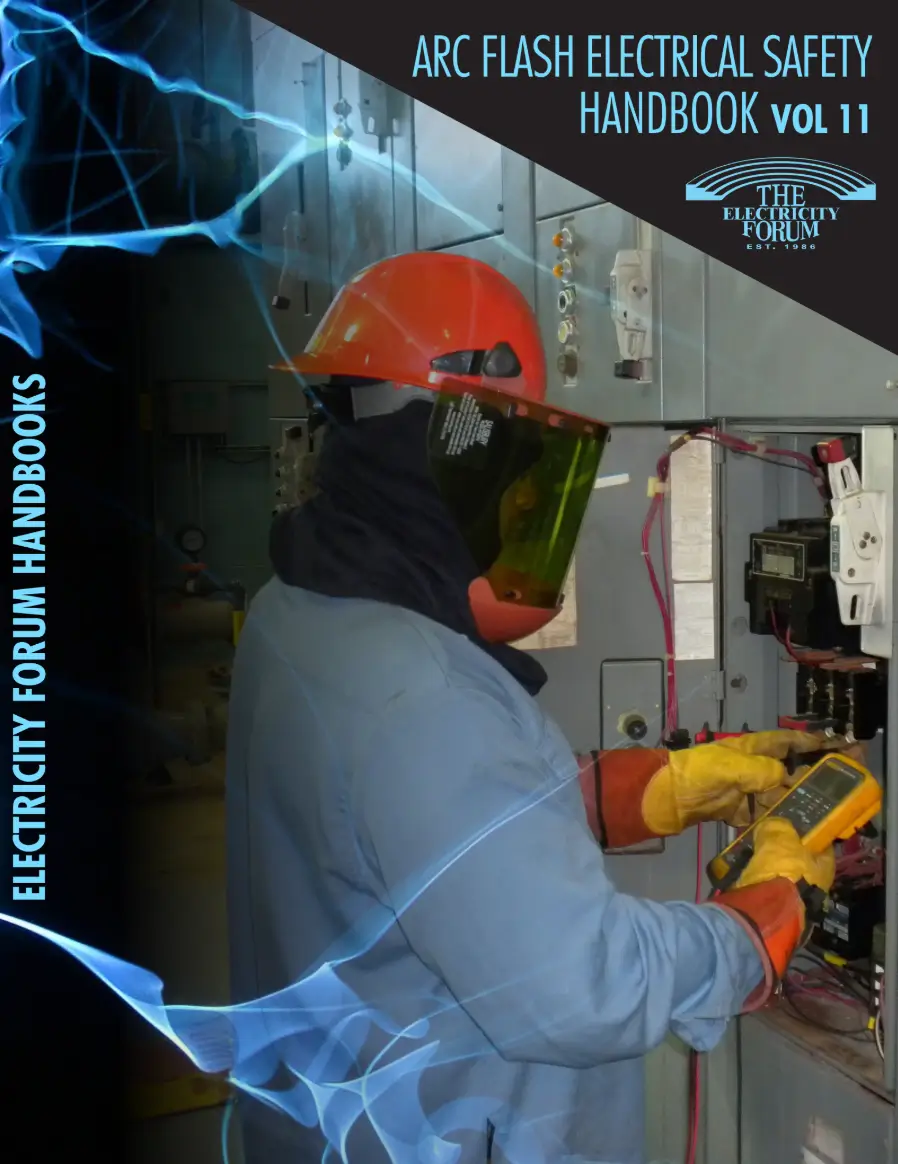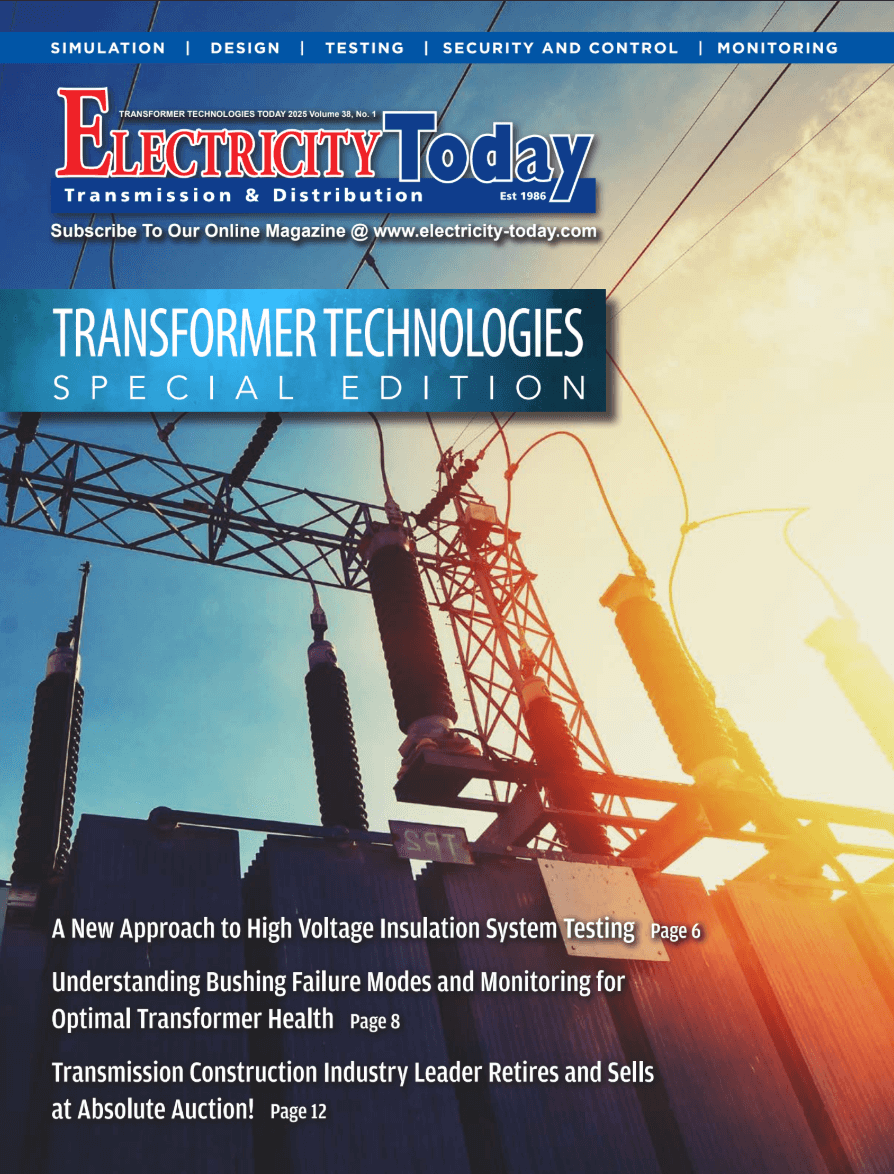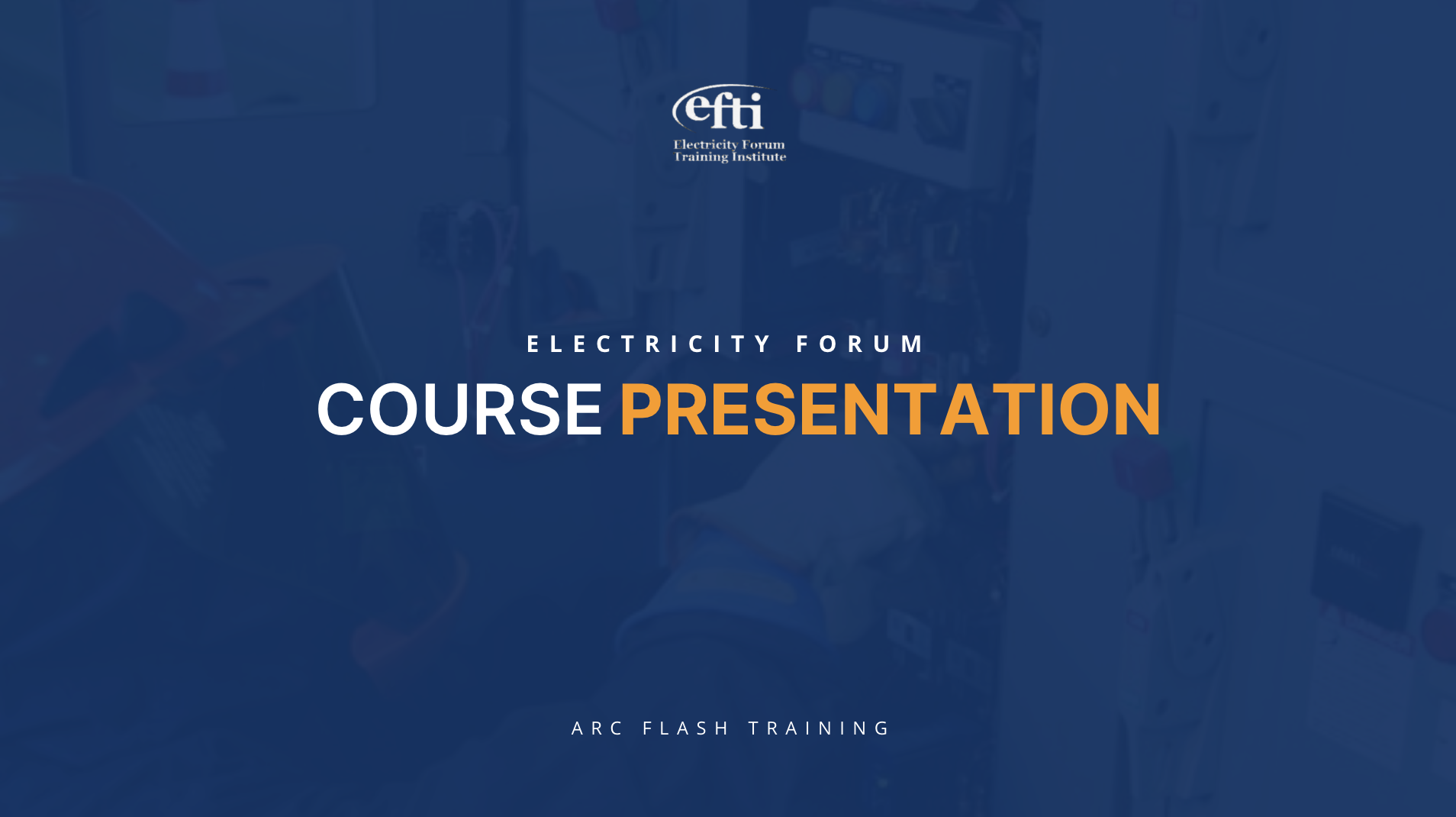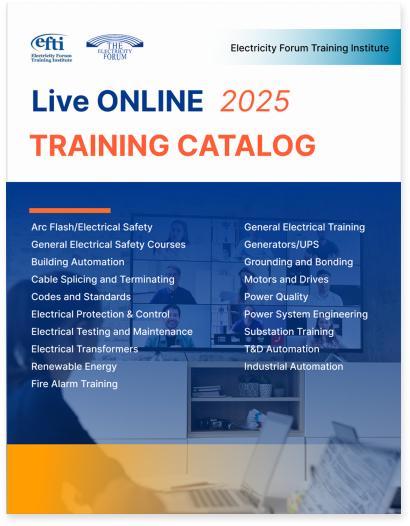5-Day (30 Hours) Electrical Grounding Week Program Outline
Course Instructor:
Pablo Diaz, Electricity Forum Lightning Protection and Electrical Grounding Consultant
DAY ONE
Course #1: Industrial Electrical Grounding and Bonding Training Program
Session 1: Electrical Grounding Overview
- Scope / Introduction
- Grounding Definitions
- Why Electrical Grounding
- Grounding Concepts
- Major Cause Of Trouble In An Electrical Distribution System
- Faults In The Electrical System
- Codes/Handbooks & Industry Standards
- CEC & NEC Object, Scope And Definitions
- IEEE Grounding Standards, Guidelines & Recommendations
- Grounding Subsystems
Session 2: Grounding Electrode System
- Earth Grounding Subsystems
- Soil Resistance, Resistance-To-Ground And Soil Resistivity
- Grounding Concept Frequency Limitations
- Grounding Electrodes- CEC 10-700
- Manufactured Grounding Electrodes
- In-Situ Grounding Electrodes
- Pipe Grounds, Metallic Water Lines & Steel Piling
- Primary & Secondary Facility’s Grounding Systems
- Grounding Electrode Connections
- Empirical, Practical Formulas Of Grounding Electrodes
- Ground Rods, Accessories And Applications
- Other Electrodes: Conductor Encased In Concrete, Conductive Cement
- Resistance-To-Ground Components
- Voltage & Current Distribution In The Soil
- Grounding Connections & Connectors (Mechanical, Compression, Exothermic)
- Grounding Conductor’s Material, Size
- Ground Resistance/Resistivity Testers – 3 &4 Pole Earth Ground Measurements
Session 3: System and Circuit Grounding
- Electrical Grounding Methods
- Grounding Of Alternating Current Systems
- Single-Phase, 3 Wire Solidly Grounded System
- 3-Phase, 4 Wire Solidly Grounded System (Mid-Point Grounded)
- 3-Phase, 4 Wire, Solidly Grounded System, WYE Configuration
- 3-Phase, 4 Wire, Solidly Grounded System With No-Neutral Load
- Grounding Connections For Equipment In Ungrounded Systems
- Ground Faults / Ground Faults Main Consequences
- Floating Systems
- Grounding Connections For Two Or More Buildings Supply From A Single Service
- Two Ground Faults On Different Lines On A 3-Phase Ungrounded Delta
- Simplified Electrical Distribution System Typical Of Commercial & Industrial Facilities
Session 4: Resistance Grounding
- Resistance Grounding, Low & High Resistance (HRG)
- High Resistance Grounding Considerations
- High Resistance Of Medium Voltage Systems
- HRG Benefits
- HRG Current Sensing Alarm Relays
- HRG, Advantages & Disadvantages
- HRG Fault Location Tracking
- HRG Design Considerations. System Charging
- Zero Sequence Current Transformer
- Zero Sequence Charging Current
- CEC 10-1108 Conductors Used With Neutral Grounding Devices
Session 5: Grounding of Generator to Supply Emergency Power
- Grounding Emergency Supply Systems (Generators & Motors)
- Objectives
- Sources Of Power Supply
- Isolation Transformer Grounding
- Emergency Supply Grounding, 3 And 4 Pole ATS Systems
- Power From Two Sources With Neutral Grounded In One Location
- Multiple Emergency Power Supplies Grounding
- UPS Grounding For Various Configurations
- Generators, Generator Disconnects Emergency Loads & Other Loads
- Grounding A Portable Generator
DAY TWO
Session 6: Bonding
- Objective, Rule 10-002 Bonding & Grounding
- Bonding Conductor- Bonding Jumpers
- Bonding Conductor Sizing- Table 16A & 16 B
- Types Of Bonding
- Means Ensuring Continuity At Service Equipment
- Interlocking Armor Of MC Cable/CSA Tech 90 Cable
- Color Of Bonding Conductor
- Electrical Shock/Severity Of An Electrical Shock
- Touch & Step Potential
- Grounding/Bonding Myths & Fatal Consequences
- Personal Protective Equipment
- Ground Fault Circuit Interrupter (GFCI)
- Bonding Indoor Metal Piping Systems
- Effective Grounding- Code Requirement
- Effective Grounding Fault Current Path- Diagram
- Star Point Grounding- Petrochemical Industry
- Industrial Automation Wiring, Bonding & Grounding
- Grounding & Bonding AC Power Distribution System With Master Control Relay
- Bonding To Racks/Cabinets In The Telecommunications Industry
Session 7: Renewable- Solar Photovoltaic Systems (PV) and Wind Power System
- Renewable Energy Systems
- System Grounding- Section 50
- Ungrounded Solar PV Systems
- Equipment Grounding In DC-Only Systems
- Grounding Options, New Bonding Conductor From Inverter
- Grounding In A Grid-Tied PV System
- PV Array/AC Service Equipment/Generator/Inverter/Battery System
- Charge Controllers/ DC Subpanels
- PV Arrangement/PV Inverter & Service Equipment Grounding Electrode System
- Renewable Energy Source/ DC Disconnect/Inverter/Utility Disconnect
Session 8: Grounding Computer Rooms/SCADA Systems
- Objectives
- Isolated Grounding Subsystem- Rule 10-904
- Isolated Bonding Conductors Serving A Receptacle
- Isolated Grounds With & Without Metallic Conduits
- Signal Reference High Frequency Subsystems
- Signal Reference Grounding Systems For ADP High Frequency Equipment
- Design & Installation Of A Signal Reference Grid
- SRG For Sensitive Electronic Equipment Grounding
- Power Supply Installation & Placement For ADP/Computer Room Power Center
- Equipment Mesh/Mats For SRG Systems
- Cable Management
Session 9: Electro Magnetic Interference (EMI) on Electronic Circuits
- Susceptibility Of Components & Electronic Circuits
- Shielding/By Absorption & Reflection
- Considerations For Utilizing Shields
- Data Processing Systems Protection
- Grounding Connections/Twin Axial & Coax Cable
- Shielding Of Shielded Cables
- Grounding For Differential Amplifiers
- Proper Bonding & Grounding For PLC Applications
- PLC Enclosure Grounding
- Grounding Systems For Programmable Controllers
- Grounding For Better Communications (Less Noise) With PLC
- Formation Of Ground Loops/Multiple Loops In Instrumentation Grounding
- Multiple Circuits Common Grounds
- Grounding Of Shielded Standard Cable & Cables Equipped With Inner Shields
- Typical Single Point Ground Network For A Control System
- Recommended Process Automation Grounding Scheme (Typical CCR Or PIB)
- How Not-To-Ground (IACS/DCS/PLC)
Session 10: Lightning Protection
- Lightning Data/Isoceraunic Maps
- Lightning Protection Subsystem Diagram- Rule 10-706/CAN/CSA-B72
- Types Of Air Terminals
- Cable Supports, Bolted Connectors, Compression Lugs, Ground Bars, Conductors, Ggrounding Electrodes.
- Spacing & Interconnecting Grounding Electrodes
- Installation & Grounding Of Lightning Arresters/Surge Protection Devices (SPDs)
- Conventional Lightning Protection Systems Hardware
- Rule 10-706, NFPA 780, UL 96A. LPI 175, CAN/CSA-B72-M87, CEC 10-702 Requirements
- Metallic & Non-Metallic Tank’s Lightning Protection
- Substation Shielding Design Methods
- Single Mast Or Shield Wire, Two-Masts & Principle Of The Rolling Sphere
- Telecommunications Lightning Protection System
DAY THREE
Course #2: High Voltage Electrical Grounding and Bonding For Utility and Industrial Applications
OVERVIEW
- Basics Of High-Voltage Grounding
- Electrical Bonding Of High Voltage Systems
- Proper Sizing Of Conductors
- Grounding Of Substations
- High-Voltage Surge Protection
- Electrical Grounding For Lightning Protection
SUBSTATION GROUNDING DESIGN
SESSION 1: DEFINITIONS AND INTERPRETATIONS
- Determination Of Need Of Personal Protective Grounding
- Basic Criteria For Safe Grounding Practices
- Electric Shock Hazard
- Grounding Practices
- Basic Design Options
- Soil Resistivity
- Ground Fault Currents
- Fault Clearing Time
SESSION 2: GROUNDING OPTIONS
- Ground Cable Assemblies
- Grounding Cable Ampacities
- Grounding Cable Reactance
- Parallel Grounds
- Grounding Clamps
- Grounding Insulated Power Cable
- Ground Potential Rise (GPR) In Medium- And High-Voltage Systems
SESSION 3: GROUND GRID DESIGN FOR SUBSTATIONS
- Determination Of Maximum Available Fault Current
- Exposure Voltage Calculations For Plants & Switchyards
- Touch And Step Potential
- Transferred Potential
- Elimination Of Step And Touch Potential
- Selection Of The Right Connector
- Horizontal Grid Design IEEE STD 80
- Introduction To 2-Layer Soil Model
- Vertical Rods Connected By A Grid
- Temporary Grounding
SESSION 4: SWITCHYARD AND SUBSTATION PROTECTIVE GROUNDING
- General Considerations For Placement Of Protective Grounds
- Power Circuit Breakers And Transformers
- Disconnect Switches And Bus
- Insulated High Voltage Cable
- Cable Terminations
- Midsections And Splices
- Grounding Transformers And Phase Reactors
- Capacitor Banks
SESSION 5: POWER LINE PROTECTIVE GROUNDING
- Grounding Of Metal Transmission Structures
- Slip Joints
- Steel Pole Structures
- Overhead Ground Wires
- Structure Footing Ground
- Grounding On Wood Pole Transmission Structures
- Transmission Line Terminal Ground Switches
- Grounding On Distribution Lines
- Surface Equipment And Vehicle Grounding
SESSION 6: TECHNICAL CONSIDERATIONS IN PROTECTIVE GROUNDING IN SUBSTATIONS AND SWITCHYARDS
- Substation Grounding System
- Typical Shock Situations - Conditions Of Danger
- Structure Touch
- Electric Circuit For Switch Operator Sources Of Hazardous Current On De-Energized Equipment
- Grounding And Jumpering Requirements
- IEE Std 80
INTERNATIONAL AND LOCAL REGULATIONS
- CSA
- IEEE 80, IEEE Guide For Safety In AC Substation Grounding
- ASTM F 855 Standard Specifications For Temporary Protective Grounds
- IEEE 1246, IEEE Guide For Temporary Protective Grounding Systems Used In Substations
- IEEE 1048, IEEE Guide For Protective Grounding Of Power Lines
DAY FOUR
Course #3: Electrical Grounding and Bonding For Telecommunications Networks
OVERVIEW
- Grounding Concepts For The Telecommunications Industry
- How The Telecommunications Industry Developed The Concept Of "Single Point Ground" System
- Utilization Of Banks Of Batteries And Their Grounding In A Telecommunication Site
- How To Ground Telecommunications Towers.
- How To Ground Equipment And Communications Antennas Installed On A Communications Tower
- Proper Ground Resistance Values Required By The Telecommunications Industry
- The Most Common Grounding Electrodes Utilized In A Telecommunications Site
- Proper Grounding And Bonding Of Equipment Installed In A Telecommunications Rack.
- The "Master Ground Bar' And Other Auxiliary Copper Bars Used In The Telecommunications Industry And Their Proper Grounding.
- Review Of Four Case Histories Performed In Cellular And Digital Microwave Sites
SESSION 1: TELECOMMUNICATIONS GROUNDING OVERVIEW
- Grounding- Definitions
- Grounding Methods Used In The Telecommunications Industry
- Grounding Practices For Cellular And Digital Microwave Sites
- System Grounding For Transformers Used In A Communications Site
- Telecommunications Single Point Grounding
- Why The Telecommunications Industry Uses A Solid Grounding System
- Impedance Grounding For A Telecommunication Tower
- Why Ground Circuits And Systems
- Grounding Systems Options For A Telecommunications Site
- Grounded Systems
- The Telecommunications Industry TIA/EIA Cabling Grounding
SESSION 2: GROUNDING ELECTRODE SYSTEM
- Grounding Electrodes: Construction And Installation
- Ground Resistance And Resistivity
- Grounding Electrode Conductor
- Electrical Grounding And Corrosion
- Materials-Splicing
- Installation And Protection
- Sizing The Grounding Electrode Conductor
SESSION 3: SYSTEM GROUNDING
- Circuit Grounding
- Why Systems And Circuits Are Grounded
- Grounded Conductor
- Direct Current Systems
- Alternating-Current System
- Systems Less Than 50 Volts
- Grounding Of Transformers
- Grounding For Telecommunications Site
SESSION 4: TOWER INSTALLATIONS
- Self-Supporting Tower Installations
- Bonding The Tower Ground To The Central Office Ground
- Pole Mounted Antennas
- Antenna Towers Mounted On Top Of Buildings
- Antennas And Connecting Coaxial Transmission Lines And Waveguides
- Protection Of Radio Equipment
- Guyed Tower Installation
- Pole Mounted Installation
- Building Mounted Installation
SESSION 5: TELECOMMUNICATIONS ELECTRICAL BONDING SYSTEM
- Equipment Bonding And Grounding
- Rack Bonding
- Major Requirements: Leakage Current, Proper Sizing
- Generators
- Transformers
- UPS Systems: Online, Standby, Line Interactive, Alternative
- Installation
- Sizing The Equipment Grounding
- Identification Of The Equipment Grounding Conductor
- Electric Shock
- Grounding And Electric Shock
SESSION 6: TELECOMMUNICATIONS STAND-BY/EMERGENCY GENERATORS
- Separately Derived Systems (SDS)
- When An Emergency Generator Is Not A SDS
- Main Bonding Jumper
- Portable Generators
- Vehicle Mounted Generators
DAY FIVE
SESSION 7: LIGHTNING PROTECTION SYSTEM FOR A TELECOMMUNICATIONS SITE
- The Phenomenon Of Lightning
- Development Of Lightning Flash
- Flash Parameters
- Lightning- Characteristics
- Electrical Effects
- Basic Protection Requirements
- Protection Systems
- Electro-Geometric Method
- Tower Lightning Protection System
- Rolling Sphere Concept
- Lightning Protection System Specifications
SESSION 8: TELECOMMUNICATIONS INDUSTRY GROUNDING PRACTICES
- Telecommunication Site Grounding
- Single Point Ground System
- Grounding Subsystems
- Exterior Ground Ring
- Exterior Structural Metal Elements
- Interior Ground Ring- Halo Ground
- Master Ground Bar
- Cable Entrance Ground Bar
- Telecommunications Closets
- Cable Trays Or Raceways
- Low Frequency Networks
- High Frequency Networks
- Waveguides Grounding
- Racks, Cabinets And Enclosures
- Central Office Battery System
SESSION 9: GROUNDING AGAINST ELECTROMAGNETIC INTERFERENCE (EMI/ESD/RFI)
- Electronic Equipment Grounding
- Introduction And Definitions
- Telecommunication Rooms And Closets
- Data Processing Equipment Grounding
- Electronic Security Equipment Grounding
- EMI (Electromagnetic Interference)
- Inductive, Capacitive And Radiation Coupling
- RFI (Radio Frequency Interference)
- Electrostatic Discharge
- Shields Grounding
- Cable Shielding And Grounding
- Coaxial Cables
- Telephone Lines
SESSION 10: TELECOMMUNICATIONS EQUIPMENT PROTECTION
- System Reference Zero
- Detection Of A Faulty Neutral-Ground System
- Sizing Wiring To Meet Computer Industry Standards
- Grounding Line Treatment Devices
- Transient Overvoltage Protector Grounding
- Gas Tubes
- Metal Oxide Varistors
- Silicon Avalanche Diodes
- Data Lines Grounding- RS232
CASE HISTORIES 4 case histories included: Four Telecommunications Case Histories will be reviewed and analyzed.
STANDARDS AND CODES REFERNCES FOR THIS COURSE
- National Electrical Code/IEEE Standards/ANSI Stds, Industry STDS
- Canadian Standards Association:
- CSA Grounding And Bonding (C22.1 E98, Section 10)
- CSA Protection And Control (C22.1 E98, Section 14)
- CSA Installation Of Electrical Equipment (C22.1 E98, Section 26)
- CSA Electrical Communication Equipment (C22.1 E98, Section 60)
- Canadian Electrical Code:
- Bonding And Grounding Of Electrical Equipment (C22.2 No. 0.4 EM1982 R1993)
- Grounding And Bonding Equipment (C22.2 No. 41 EM1987 R1993) (C22.2 No. 0.4 EM1982 R1993)
- NEC National Electrical Code
REFERENCES
- Communications:
- TIA/EIA - 568: Commercial Building Telecommunications Cabling Standard
- TIA/EIA - 607: Commercial Building Grounding And Bonding Requirements For Telecommunications
- ISO/IEC IS 11801: Generic Cabling For Customer Premises
- BICSI: BICSI Telecommunications Cabling Installation Manual
- BICSI: BICSI Customer-Owned Outside Plant Design Manual (CO-OSP)
Review of expectations
Questions and Answers
COURSE TIMETABLE
All days:
Start: 8:00 a.m.
Coffee Break: 10:00 a.m.
Lunch: 12:00 noon (included with course)
Restart: 1:15 p.m.
Finish: 4:30 p.m.
